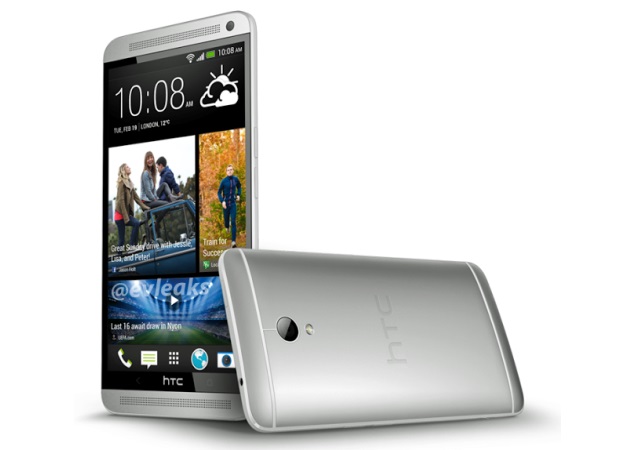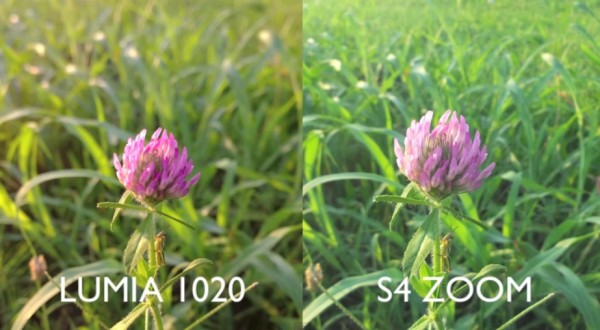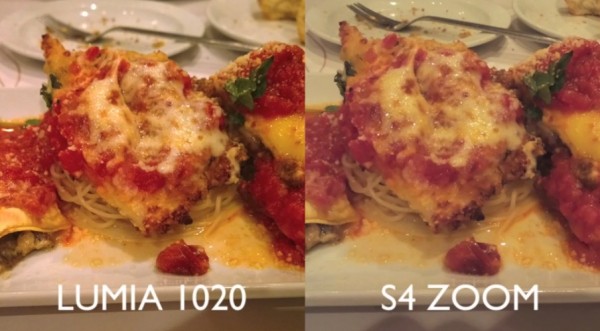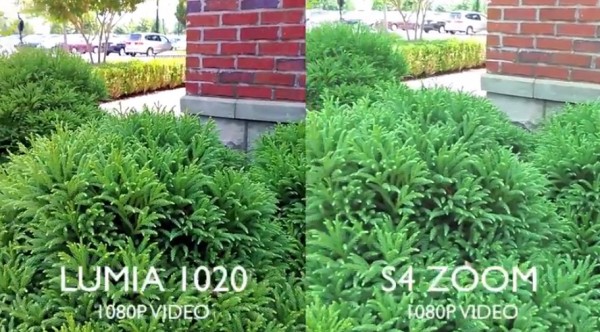The Lumia 720 is bang in the middle of Nokia's line of Windows Phone 8
offerings. It aims to offer some of the premium features found in the
Lumia 920 and Lumia 820 at a price that's pocket-friendly like that of Lumia 520 and Lumia 620.
Does the Nokia Lumia 720 deliver on its promise or does it end up being a confused offering? Let's find out.
Build/Design
t's easy to fall in love with the Lumia 720. Industrial design has
always been Nokia's strength, and with the 720, the company seems to
have outdone itself. The 720 takes Lumia 920's solid build and packs it
in a smaller package that fits perfectly in the hand.

The Lumia 920 was ridiculed for being too heavy - and rightly so -
and even though the 720 is no 920 replacement, we can't help but feel
that, at least as far as design is concerned, this is the phone that
Nokia's previous flagship should've been. We much prefer the matte
finish on our Red Lumia 720 to the glossy Yellow 920 we got.
Fingerprints are no issue with the 720, with the body as well as the
screen remaining practically smudge free. The button placement on the
Lumia 720 is similar to other recent members of the family. The right
edge has the volume rocker, the power/ lock button and the dedicated
camera button towards the bottom. The top edge has the microSIM and
headphone jack, while the left and bottom edges feature the microSD slot
and Micro-USB ports, respectively.
The front features much thinner bezels on the side, again, compared
to the 920, which had a display that looked bigger than it really was,
due to the wasted space on all four sides. While the Lumia 720 display
isn't exactly edge-to-edge, it makes much better utilisation of the
space.

Below the screen are the three standard Windows Phone buttons: Back
(which doubles up as an app switcher on long press), Windows/ Home (long
press for Speech) and the Search button, that continues to be as
useless as ever even for Bing users like us, as it just brings up a Bing
search box. We really wish Microsoft offered a unified search instead,
or let us configure this button to launch something else entirely. Just
above the display we have the Nokia branding and ear piece grill, with
the front-facing camera just to the left.The back of our Red Lumia 720
has the rear-camera lens in the centre right next to the LED flash and
Carl Zeiss branding. A NOKIA logo sits back in the middle, with the
bottom part having three wireless charging pins and barely legible
certification info as well as the text Made in China embossed. A speaker
grill sits on the bottom left corner.
All in all, we'd go so far as to say that the Lumia 720 is our
favourite Nokia phone till date, at least as far as industrial design is
concerned.
Display
Nokia Lumia 720 comes with a 4.3-inch display of 480x800 pixels
resolution, translating to a density of 217 pixels per inch. While that
doesn't sound impressive, the real life experience is quite good.
Colour reproduction on the ClearBlack LCD is quite accurate. The
viewing angles and outdoors visibility are as good as you'll come
across. Like the Lumia 920, you can operate 720's touchscreen while
wearing gloves.
Overall, while we sure wish the 720 sported a higher resolution display, there's no doubting the quality of this one.
Camera
The Lumia 720 comes with a 6.7-megapixel rear camera with Carl Zeiss
optics that is a solid performer overall. The camera takes good photos
outdoors when there's plenty of light. The colours look natural and
don't appear saturated or artificial in any way. However, pictures
clicked under bright artificial lights appear a little washed out.
In low light conditions, the Lumia 720 shines bright (pardon the
pun). The LED flash works surprisingly well, and illuminates the
subjects within its range uniformly. Even when you choose to disable the
flash, the 720 delivers good results - not quite the 920 low-light
image quality, but then this is a phone that costs half as much, which
makes it especially great.
The camera software lets you tweak a few settings for still pictures
like Scenes (Auto, Close-Up, Night, Portrait, Night Portrait, Sports,
Backlight), ISO, Exposure Value, White Balance, Aspect Ratio, and Focus
Assist Light.
The bundled Smart Lenses like Smart Shoot, Cinemagraph, Nokia Glam
Me, Panorama and Bing Vision. We had mixed results with these.
Cinemagraph (create GIFs from images) and Nokia Glam Me (add effects to
images) are gimmicky at best, they work as advertised. However, when you
come to Smart Shoot and Panorama, things get a bit rough.
Smart Shoot is Nokia's much advertised feature that detects faces -
and other objects - and lets you do things like removing unwanted things
from a photo and/ or mix and match 'faces' from a series of photos
taken in the same setting. While this makes for a great demo, real life
results leave a lot to be desired, as the phone failed to detect many
faces in a group photograph.

Similarly, Panorama is a horrible implementation of what has become a
standard feature in most phones. Instead of holding up your phone and
just moving it around to take a Panorama, NOKIA chose to go a peculiar
way. Click a photograph and watch it appear on the left most corner of
your screen and stay there. You are then expected to align this picture
with the real world view that you see on your screen, and when the two
are perfectly aligned, click another one. And so on, so that the phone
can 'stitch' these photos together. This definitely feels like an
implementation from a bygone era that people are unlikely to put up with
to click Panoramas from their Nokia Lumia 720.
Of course, the 720
is not the only phone that suffers from these drawbacks, as the other
Windows Phone 8 members of the Lumia family use the same lenses.
In case you are wondering, Bing Vision can be used to scan QR codes and Microsoft tags.
The Lumia 720 is capable of recording only 720p video, which may
disappoint the spec crazy, but is unlikely to be missed by most. There's
no fancy stuff like image stabilisation - as found in the Lumia 920 -
still, the smartphone is capable of taking decent videos. The built-in
mic does a capable job of picking up the sounds, and the audio quality
is good as well.
The 1.3-megapixel front camera can record 720p videos. Like most
front cameras, it does a good job for video chats, and still photography
in well-lit conditions, but leaves a lot to be desired in dim lights.
Software/User interface
Nokia Lumia 720 runs on Windows Phone 8, which means there isn't much
room for customisation, other than preloading certain apps. Similar to
its other Windows Phone 8-running Lumia cousins, the 720 comes with a
host of pre-installed apps like BIGFLIX (entertainment), BookMyShow
(booking tickets), Cosmopolitan (lifestyle magazine), HERE Drive, HERE
Maps, Hike (messaging), Nokia Music, TripAdvisor (travel), and Zomato
(food/ restaurants guide).
Standard apps like Internet Explorer, Office, One Note, Wallet, and
the experience is no different than any other Windows Phone 8 device. As
mentioned in the Camera section, the phone comes with some lenses,
which also show up as stand-alone apps. These are Bing Vision,
Cinemgraph, Nokia Glam Me, Panorama and Smart Shoot.PhotoBeamer is
another interesting app that lets you beam your photos to any computer
over Wi-Fi, providing an instant, wireless slideshow you can see over a
large screen. During our tests, this worked as advertised.
Xbox games is your gaming hub, where most games get installed by
default. You can maintain your profile and do other related activities.
We are big fans of the Transfer My Data app, which imported contacts
and messages from our old Nokia phone over Bluetooth with minimum fuss.
Another one of our personal favourites, the Drive app performs great as
ever, and it remains our preferred navigation app on any platform, even
above Google Maps. Nokia Music - with free, downloadable, DRM-free music
for a year, is always well received as well.
Performance/Battery Life
The Nokia Lumia 720 handles pretty much everything you throw at it
without any hiccups. Yes, there's no quad-core processor, but you are
unlikely to miss that in every day activities. From browsing, to playing
music, to emails or editing Office files, everything goes off smoothly.
One area where we were keen to put Lumia 720 under the test was
gaming. We installed quite a few games on our 720, including popular
titles such Angry Birds, AE Bowling 3D, Ice Age Village, AE 3D Motor, 3D
Brutal Chase, and AE Fruit Slash. We were able to play all these games
without any hiccups.
One disappointing aspect of the Lumia 720 is the 512MB RAM, which
means we couldn't even install games like Temple Run that need 1GB RAM.
While we are disappointed with Nokia's decision to ship with half the
RAM of what many cheaper Android phones are shipping with, we hope
developers of games such as Temple Run can optimise their apps not to be
so resource hungry. Perhaps that is an issue for Microsoft to address
as well, as devices with much lesser RAM are able to run these games
fine on other platforms.
Verdict
At Rs. 18,999, the Nokia Lumia 720 is a really attractive proposition.
The phone checks all the right boxes, from great looks, to a camera that
performs quite well, and hardware that handles pretty much everything
you throw its way. Yes, Windows Phone still has a long way to go before
it can begin to compete with Android and iOS, but unless you are someone
who must have access to the latest apps, it will do the job for you,
since most popular titles, barring a few high-profile exceptions (like
Instagram) are already here.
Pros
- Great design
- Good camera performance
cons
- Some games don't run thanks to 512MB RAM
- Windows Phone ecosystem still needs to catch up to Android and iOS
Ratings
- Design: 4
- Display: 3.5
- Performance: 3.5
- Software: 3.5
- Battery Life: 4
- Value for Money: 4
- Camera: 4
- Overall: 4
















































0 comments: